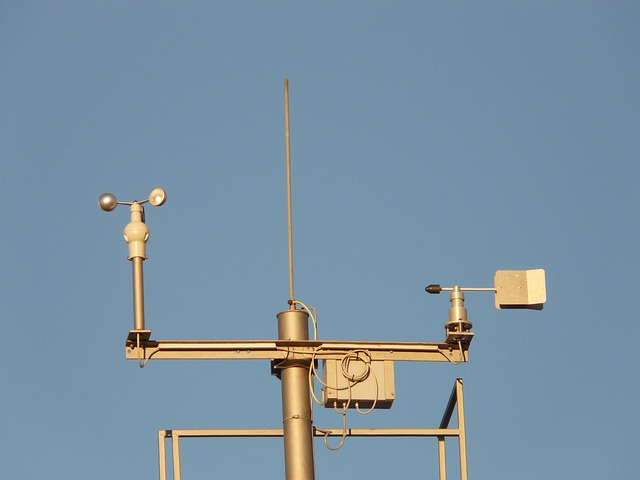(866)223-5699
(866)223-5699

A Rain Station is an automated weather monitoring system that helps to measure and analyze various parameters such as rainfall, wind speed, air temperature, air pressure, and humidity. This data can be used to better understand the weather dynamics of a particular region so that more accurate forecasts can be made. The Rain Station are equipped with technology that allow for remote control access from any web-connected device or computer.
Rain Station have been around since the late 1950s but advances in technology over the last few decades has enabled these systems to become increasingly sophisticated. Today’s Rain Station are able to measure multiple different environmental conditions in real-time and also store this data for future reference and analysis. Data points collected by these stations includes not only rainfall but also other meteorological information such as wind speed/direction, temperature, barometric pressure and relative humidity readings.
In recent years these machines have been increasingly employed at locations all around the world ranging from large cities (e.g., London) to rural areas (e.g., Hokkaido in Japan). They have proven invaluable in helping city planners make informed decisions about traffic levels during inclement weather conditions or determining if nearby bodies of water pose a risk due their changing tides etc.. Furthermore they have greatly helped communities prepare for natural disasters such as hurricanes or typhoons by providing advance warning of impending storms systems' arrival times on land masses allowing people more time to evacuate if needed and seek shelter elsewhere beforehand thus reducing loss of life etc..
Rain Station networks offer advantages beyond mere forecasting; they provide researchers with real-time insights into global climate trends thereby enabling them develop potentially breakthrough techniques for mitigating their effects further down the line - something which is becoming increasingly important given our current understanding of how drastic shifts in climate patterns could lead us closer towards catastrophic outcomes unless proper preventative steps are taken now!
Absolutely! Weather stations are some of the most valuable tools available to us in understanding and predicting our changing climate. While they don’t provide a solution to global warming, they can be incredibly helpful in tracking its progress and effects, as well as providing important data for scientists researching the issue.
Weather stations also offer invaluable information on weather conditions that can help inform decisions like whether or not to cancel outdoor events due to inclement weather, when is the best time to pick up supplies during a hurricane season, or how much rain has fallen over a certain period of time. They can also keep people safe during extreme weather such as tornadoes and severe thunderstorms by providing early warnings so necessary action can be taken.
Overall, installing one or more personal home weather stations at your location provides access to useful environmental information about temperature changes throughout the day, rainfall amounts over an extended period of time and wind speeds allowing accurate planning for any activities like gardening, farming or other outdoor pursuits affected by variable weather patterns. Additionally many modern models come equipped with sophisticated alert systems should any hazardous conditions arise so you know when precisely it's best to take precautions against potential hazards such as lightning strikes and flash floods.
In short, having a reliable source of current atmospheric data is incredibly useful both personally and professionally; helping those who work outdoors understand various factors that could potentially impact them while aiding those looking into long-term research on climate change make better educated hypotheses in their studies - making them an invaluable tool worth investing in!
Rainfall monitoring and analysis is an important part of climate research. As part of this research, meteorologists collect data on rainfall from a variety of different rain station. These types of rain station can be broadly divided into two categories: automated and manual.
Automated Rain Station: Automated rain station rely on technology to collect data such as the amount and type of precipitation, as well as other environmental factors like wind direction and temperature. Automated rain gauges are usually installed in weather or monitoring networks in urban areas with access to electricity and communication infrastructure. Data collected by these systems can then be used to monitor water levels, floods, droughts, evaporation rates, snow cover change over time etc., which are all critical components for predicting future changes in rainfall patterns across the globe and developing long-term strategies to protect our environment.
Manual Rain Station: Manual rain gauges are typically used when power sources or communications infrastructure is not available; they usually consist of a simple collection bottle with markings graduated according to millimeters that must be read by hand at regular intervals (often monthly). While manual measurements provide fewer readings than automated ones do, they still offer valuable information about precipitation trends over time. Manual gauges also provide a more cost-effective alternative for local communities looking to measure rainfall within their region without breaking the bank - making them ideal for collecting data from rural areas where resources may be limited but knowledge needs remain immense!
In addition to these two main categories, there is also a third type known as tipping bucket rain gauge which consists of an empty container weighed down by several small weights called “tipping buckets” - each bucket empties when it reaches its maximum weight thus informing how much rainfall has fallen during the period being measured (typically 5 minutes). Tipping bucket rain gauges tend to be significantly more accurate than both manual and automated gauges; however their setup costs tend to limit their use mainly within professional environments like airports or large agricultural estates where accuracy is key factor!

Rain station are systems used to measure the amount of rainfall in a given area. They come in many different types that can be used for a variety of purposes.
Agricultural rain station are set up on farms and in rural areas to provide detailed measurements about the amount and intensity of precipitation, which can be very useful for crop irrigation or pest control decisions. Home rain station are typically small weather monitoring units designed to fit most residential yards, providing information such as daily rain rate or storm warning alerts that may help predict flooding events.
Industrial rain station come equipped with sensors capable of measuring heavy downpours at industrial sites such as refineries, power plants, and oil wells. Airport rain station make use of radar technology to monitor air traffic patterns and deliver accurate data regarding how much rainfall is falling near airports.
Schools often use outdoor weather monitoring devices like thermometers and hygrometers connected to a central computer within their own premises to provide real-time rainfall readings for classrooms during field trips since thunderstorms tend to surprise even experienced teachers at times! Marine rain gauges are especially important for understanding rainy seasons along coasts due oceanic currents carrying large amounts moisture from rivers out into the open sea where it then descends onto land again after being cooled by coastal winds.
Airport-based rain station allow airports and airlines to better calculate visibility distances and avoid flight delays due to poor weather conditions while remaining compliant with FAA safety standards. School-based sensors may be used by educational institutions as part of their environmental science curriculum; students can receive real-time information about the areas around them through such devices.
Home rain station are designed to provide accurate, up-to-date weather information to those living in areas where access to reliable data can be limited or unreliable. These systems typically measure wind speed and direction, barometric pressure, temperature (both air and soil), relative humidity, rainfall rate as well as other meteorological parameters such as dew point temperature and wet/dry bulb temperatures. The collected data is then sent offsite using radio frequency transmission for further analysis or display on a computerised device back at the house. Home Rain Station can also be used for irrigation timing depending on local conditions such as soil moisture levels.
Marine Rain Station are commonly used aboard vessels that operate out at sea or within large bodies of water such as lakes and rivers. They measure both environmental factors unique to the aquatic environment - tide level changes, wave heights/directions - along with all the same atmospheric variables monitored by land-based units: wind speed & direction; barometric pressure; temperature; relative humidity etc depending on the. This data is then relayed back from shipboard sensors either via satellite communication links or directly through wired connections when docked alongside port facilities so they can be accessed by authorised personnel whilst ashore. All this data helps ensure that ships navigate safely within their protected area while providing real time information regarding oceanic conditions which may ultimately aid in weather forecasting forecasts ashore.

Personal rain station has many advantages. If your goal is to get the best weather forecast for your life or simply to be a hobbyist, you could use one of these weather stations. The basic station works well when the only thing that needs to be done is temperature or humidity.
In conclusion, a Rain Station is an invaluable tool for anyone wanting to keep track of rainfall in their local area. It's easy to set up, affordable, and provides month-by-month rainfall data all the way back to the year 2000! So why wait? Get your own cart full of rain tracking equipment today! Who knows-- you might even be able to predict the weather!
Leave a comment